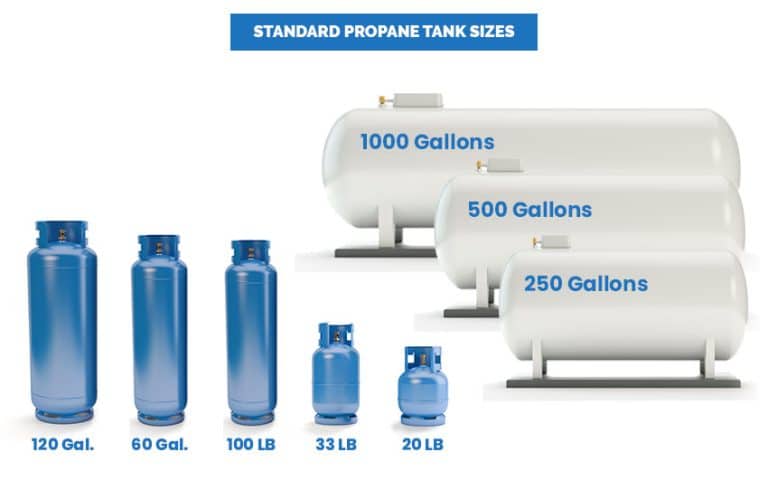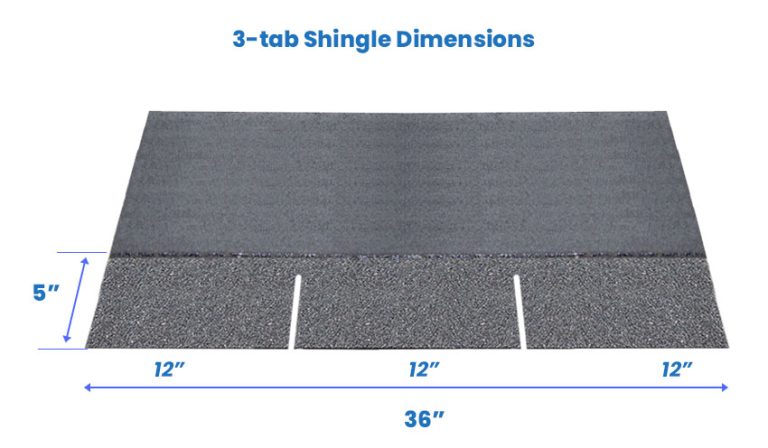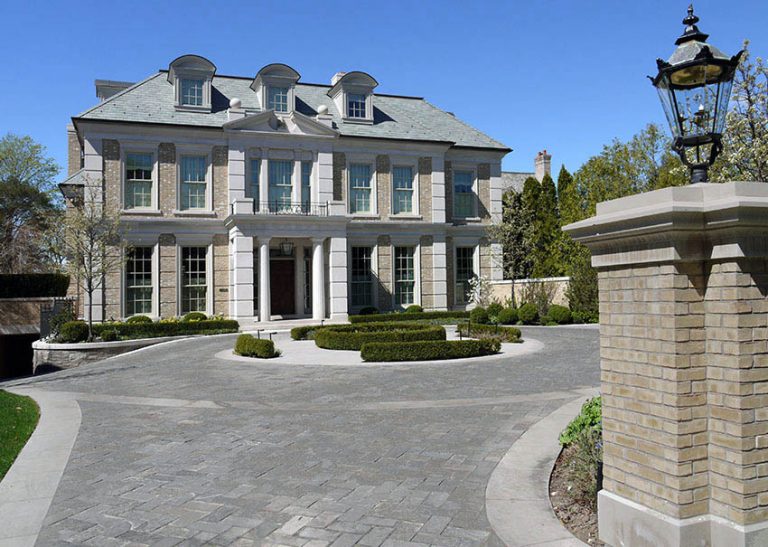Roof Cleaning (How to Clean a Roof & Benefits)
In this guide to roof cleaning you’ll get ideas on how to clean a roof, why it’s necessary, pressure cleaning & soft wash methods, cost, and cleaning services tips.
 Frequent roof cleaning increases the longevity of roof shingles and tiles by eliminating harmful algae, dust, filth, fungus, and dirt, restoring the beauty of the roof and helping increase its lifespan.
Frequent roof cleaning increases the longevity of roof shingles and tiles by eliminating harmful algae, dust, filth, fungus, and dirt, restoring the beauty of the roof and helping increase its lifespan.
Cleaning the roof is necessary, especially in areas with high vegetation and moisture, to catch and remove problems before they can turn into costly damage.
Roof cleaning is also important for residences in tropical locations or nearby major coastal or shoreline properties, as debris and sand from a neighboring beach can accumulate into the corners and crevices of a roof, creating significant damage.
In this article, we will go over some basic yet important advice and information on cleaning and maintaining your roof. You can review these details with professional roof cleaning specialists so you will know how to effectively manage your home and your property’s exterior elements, specifically your roof.[toc]
What Is Roof Cleaning?
 Roof cleaning is the procedure of cleaning roofs, which is usually done by removing algae, mildew, mold, moss, lichen, leaves, and many more. Cleaning your roof regularly can help in extending its life and its capacity to function.
Roof cleaning is the procedure of cleaning roofs, which is usually done by removing algae, mildew, mold, moss, lichen, leaves, and many more. Cleaning your roof regularly can help in extending its life and its capacity to function.
Moreover, it can be done through bleaching or adding sodium percarbonate solution, different cleaning solutions, or asking for services from professional cleaning companies.
Certain roof cleaning services provide roof snow cleanup, debris eradication, and limb/tree disposal and will clean up practically anything that Mother Nature chooses to leave behind.
Is It Necessary to Clean the Roof?
Yes, and here are the main reasons why roof cleaning is necessary.
It Increases The Longevity Of Your Roofing System
Water and microorganisms can damage your roofing and shorten its longevity. Many homeowners believe there is hardly anything they can do regarding the black stains on their roofs. They then proceed to change them when the reality is that their roof only requires cleaning.
When you fail to manage your roofing components, they eventually degrade. Algae and moss nibble away the limestone-filling materials in your shingles, causing them to deteriorate over time, just in case you didn’t know.
Hence, as soon as you notice any germ, bacteria, or dirt buildup, contact a reputable contractor. According to studies, regular cleaning can extend the life of roofing systems by up to 25 years.
Frequent Cleaning Provides Your Roof With A Completely New Look
Algae and moss are not only harmful, but they are also unappealing. This is certainly relevant if you have a light-colored roofing structure.
Fortunately, roof cleaning revitalizes the exterior aesthetic of your home. Do not, however, make the wrong choice of replacing your roofing too soon.
That is why you should contact roofing contractors who provide cleaning services if you wish to restore its beauty. These experts will ensure that your roofing shingles regain their natural color and elegance.
Periodic Roof Cleaning Helps To Keep Pests At Bay
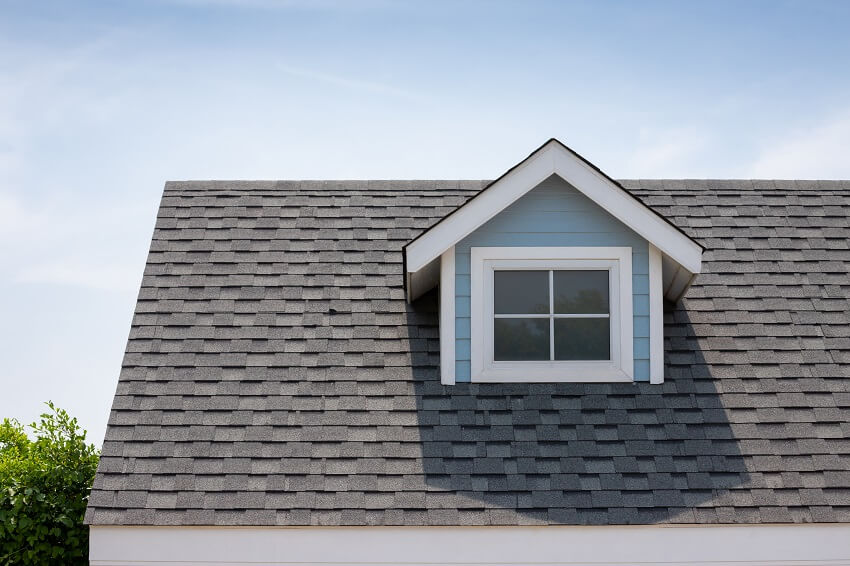
Furthermore, once these holes are created, moisture will enter your property through the broken shingles, affecting the interior system as well. The mold that grows on your roof creeps inside your home, causing allergies and other medical issues. However, these huge problems will be prevented if you conduct regular cleaning and maintenance.
Proper And Regular Roof Cleaning Helps In Saving Energy Costs
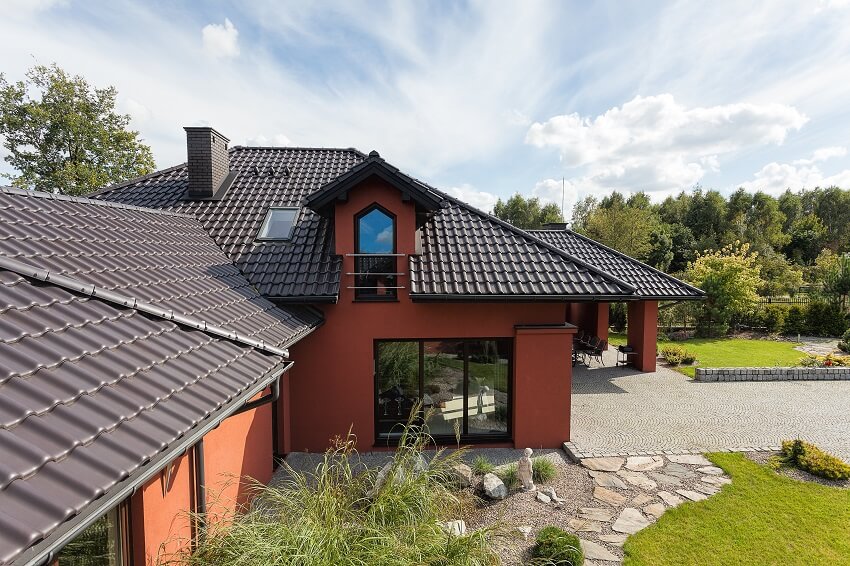
As previously said, algae and moss attack your shingles, reducing their efficacy. Most people are unaware that the organic material waste on their roofs is the cause of their increasing energy expenses.
Fortunately, proper and consistent cleaning boosts a roof’s solar reflectivity. You can be certain that your household will be much more comfortable and will save more money.
What Is Soft Wash Cleaning for Roofs?
Soft washing is a cleaning process that involves a low-pressure washing approach, as well as a combination of algaecides, bleach, detergents, and water, to effectively clear organic stains, mold, and algae off roof surfaces.
Moreover, soft washing must be utilized on roofing surfaces that are extremely difficult to wipe down with pressure or could be broken if high pressure is performed on them, such as roof shingles. Soft washing, after all, was originally developed to remove algae from shingles.
What Is Roof Pressure Cleaning?
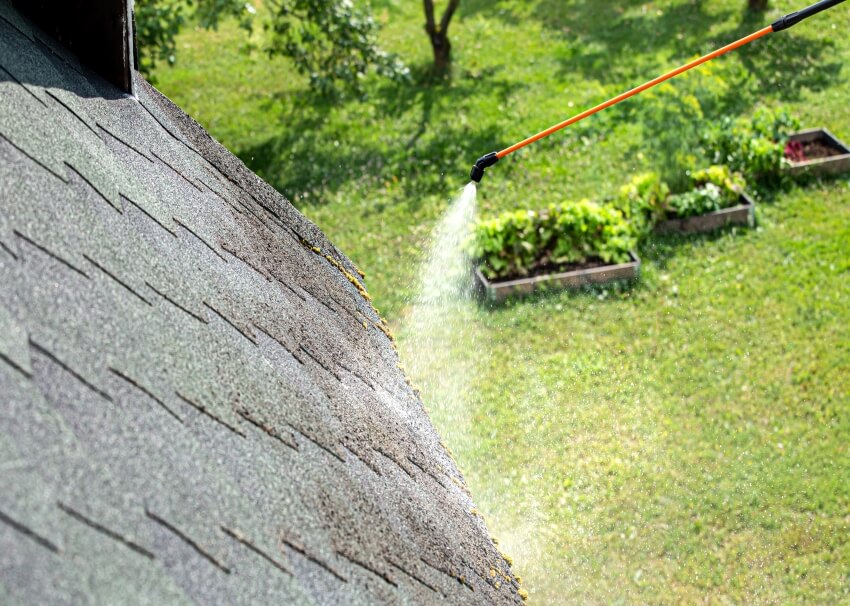
Pressure washers generate highly pressurized water jets that can be employed to instantly blast dirt from surfaces. When the surface being washed can withstand that degree of water pressure, this cleaning procedure functions extremely well.
However, while roofs are designed to withstand heavy rain, it does not mean that they can also withstand the water being released by pressure cleaners. Simply stated, unless you use it on a low setting (which is a bit ineffective), washing it with a pressure washer will most likely cause a lot of problems.
Roof Washing Costs
Roof cleaning, like some other roofing maintenance, is best left to specialists rather than homeowners. You can expect to pay around $370 to $610 for a professional cleaner, with an average cost of $490.
What is the size of your roof? What is the composition of your roof? Your specific cleaning cost will be determined by these as well as certain factors. Prices per square foot typically range from $0.15 to $0.68.
How Often to Clean a Roof

How to Wash a Roof
Here are descriptions for cleaning a few of the most popular types of roofs.
Roof Shingles Cleaning
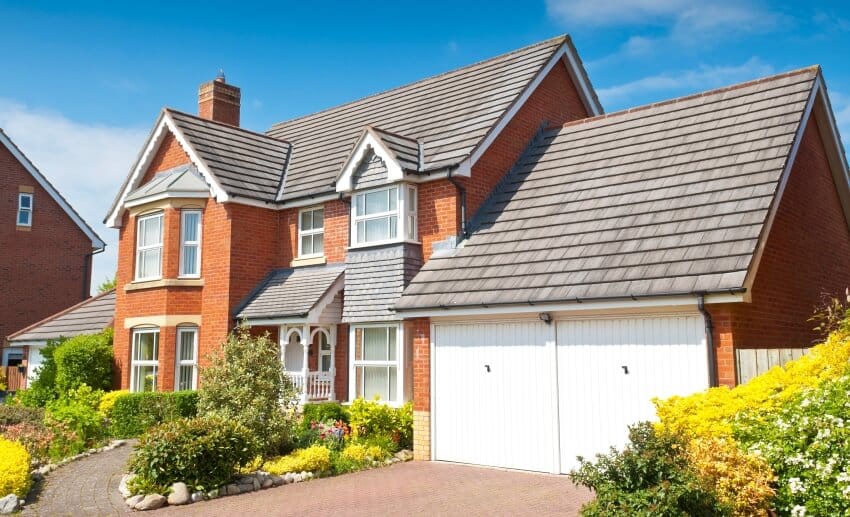
• Begin cleaning above the roof. Distribute an adequate application of your power washing chemical solution starting from the top down to the bottom. Some people prefer to add a 1/4 cup of dishwashing soap (not laundry detergent) to their solution to allow for a gentler flow of chemicals down the roof. This allows the active ingredient to remain wet for longer, giving it more time to interact with the algae that you are removing.
• Do not overdo it with the chemicals. Less is more in the idea that you must not have chemicals streaming down like a waterfall. If you are using a garden water sprayer, you are unlikely to get this amount out of it. When using chemicals, less means “more”.
• Problematic areas should be treated repeatedly. If the algae have not vanished or turned white within a few minutes of applying the first application of power washing solution, reapply in the same manner. Certain fire moss and other excessive moss might cause problems because it is a much tougher kind of black algae, thus, you will have to focus on cleaning it until it gets eliminated.
• After doing the cleaning process, come down from the roof cautiously on a ladder and let the operation take its course. There is nothing further you need to do after applying the solution and spraying it with water; simply let it do its job. Observe it after a few weeks to see whether the shingles need to be treated with additional chemicals.
What is the Best Cleaner for Roof Shingles?
The best and safest cleaner for shingles is by using a garden hose and a vinegar solution. You can spray a vinegar solution combined with dishwashing liquid using a sprayer. Be certain that the entire surface is coated.
To avoid unintentional harm, cover your landscaping and reroute downspouts. Allow the solution to sit for a few hours before gently blowing. If required, repeat the process, then rinse once the entire roofing and shingles are spotless.
How Do You Clean Properly a Roof without Damaging Shingles?
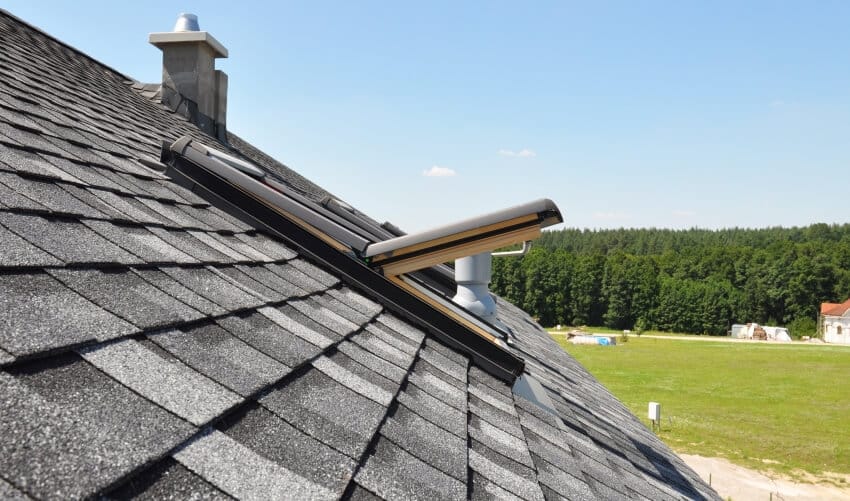
Non-pressure chemical washing is the most reliable technique to clean roofs while preserving the texture and structure of the shingles. Excessive pressure involves removing the surface granules of the shingles, causing damage to your roof.
As a matter of fact, the steps aforementioned about how to clean shingles are the ones you can follow to clean your roofing efficiently without damaging your shingles.
However, non-pressure washing takes longer and usually, it necessitates the use of professional equipment. It is indeed impressive to be able to manage as much of your house maintenance as possible on your own.
However, the best approach to minimize damage to your shingles is to hire a licensed specialist to clean your roofing system without damaging the shingles using a non-pressure cleaning.
Roof Tile Cleaning
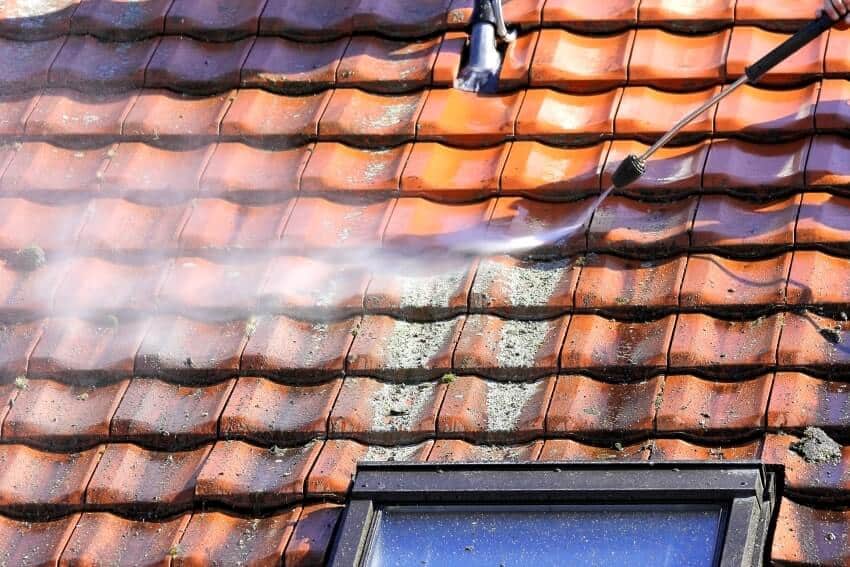
Cleaning Your Tile Roof Using a Stiff Brush or Trowel
Scraping off the moss, algae, and grime by hand is a basic yet manual way of cleaning tile roofs. To put it simply, you have to scrape the moss and debris away from the tiles with a device such as a trowel.
The drier the day, the less likely moss and other things will become trapped in the tiles. To put it another way, you can also use a stiff brush to scrub the dirt off the tiles – both procedures are quick and simple ways to efficiently clean your tile roof. However, this might take quite a lot of time and effort – but all will be surely worth it in the end.
Applying Safe Chemically-Based Cleaning Solutions
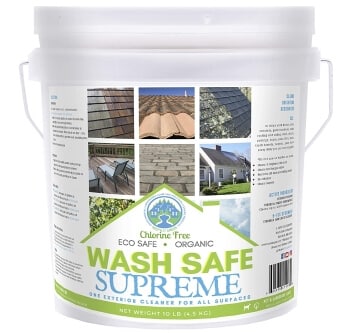
Various chemically-based solutions for soft washing have been created to assist in cleaning roofing tiles with moss and fungus growth. Moss killers, fungicides, and anti-moss chemicals can be sprayed onto tile roofs to kill any natural vegetation on them.
Nevertheless, this must only be performed after scraping the tiles with a stiff brush or trowel to ascertain that the chemical solution goes into all the crevices and cracks where mold, algae, and other filth can frequently become stuck.
Nonetheless, you should remember to protect any surrounding plants and grass while using moss-killing chemical solutions. The chemical-based cleaning agents are designed to destroy all living organisms, not only moss and algae. Furthermore, be certain that any chemical effluent does not enter any drinking water supplies.
Cleaning Metal Roofs

Yes, you can even use it in conjunction with a soft bristle brush to help eliminate dirt while inflicting no harm to your paint. When cleaning it, never use a wire brush or steel wool. These items are extremely harsh and will remove the paint from your roof.
However, to remove a stubborn stain, you may require something a little stronger at times. In certain circumstances, a solvent combined with water might be used to spot-clean difficult-to-clean stains. You can use this product solely on the portions that necessitate increased focus.
To make sure that things will not go wrong, you have to be guided by the cleaning solvent’s instructions. Only use these solvents to clean the small areas of your rooftop to ensure that they will not degrade the paint.
Use extreme caution while working with these strong cleaning substances. Since solvents can be poisonous and combustible, you have to keep your worksite well-ventilated. Keep an eye out for any open fires or sparks. It is also critical to use protective eyewear and safety gear.
Aside from your brush, you will need other cleaning equipment, such as a washcloth or sponge, to wipe off the metal panels after washing them with your preferred solution. To avoid streaks from developing, anything you use must only come into touch with pure water and thus should not include any detergent or soap-based cleaners.
You can use a pressure washer when washing metal roofs, but it can be risky as it might damage their quality. But if you have no choice, then you can try to use it; just make sure that you are applying light pressure only.
Using a pressure washer to clean metal-made roofing is a distinct and speedier method. Therefore, you should exercise caution when using this technique.
Extremely high pressures have the potential to harm the roof. Use no more pressure than is absolutely necessary. The water should also be hot to easily soften and break up the dirt and algae development on your roof.
Tips When Cleaning the Roofs
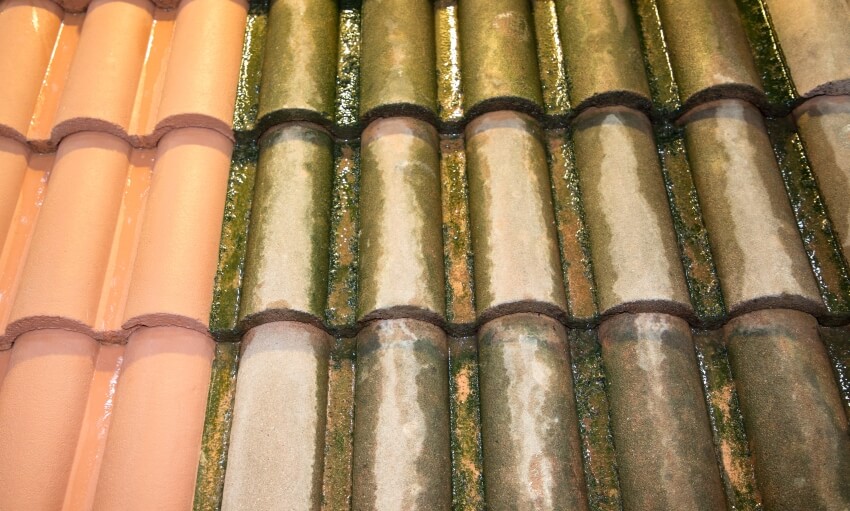
• Begin at the top portion of the roofing and work your way down, blasting or rinsing the waste using your sprayer or power washer.
• When washing your rooftop, a garden hose can frequently be used to effectively rinse material away. You may want to buy or rent pressure washing devices if you have recurring algae, mold, or bug infestations. If this is the case, make sure to use relatively low pressure. High-pressure washing can remove the asphalt from your shingles, which worsens the condition of your roofing.
• To clear away any waste accumulation from your rooftop, most reputable pressure washing services recommend utilizing a mild yet efficient power solution. In this way, you will not be forced to rely on extremely high-pressurized water that might harm the roofing quality.
• Water can seep into the rooftop deck and induce major difficulties if you force it to spray beneath the shingles; hence always spray in the direction of angles.
• While you are washing the rooftop, take the time to inspect your gutters. Your gutters must be capable of efficiently flushing your solution and any loose material out from your roof. If you find your gutters becoming congested or overflowing with water while you are working, then you have to unclog and clean them.
Visit our guide to the foam gutter guards pros and cons for more related content.


